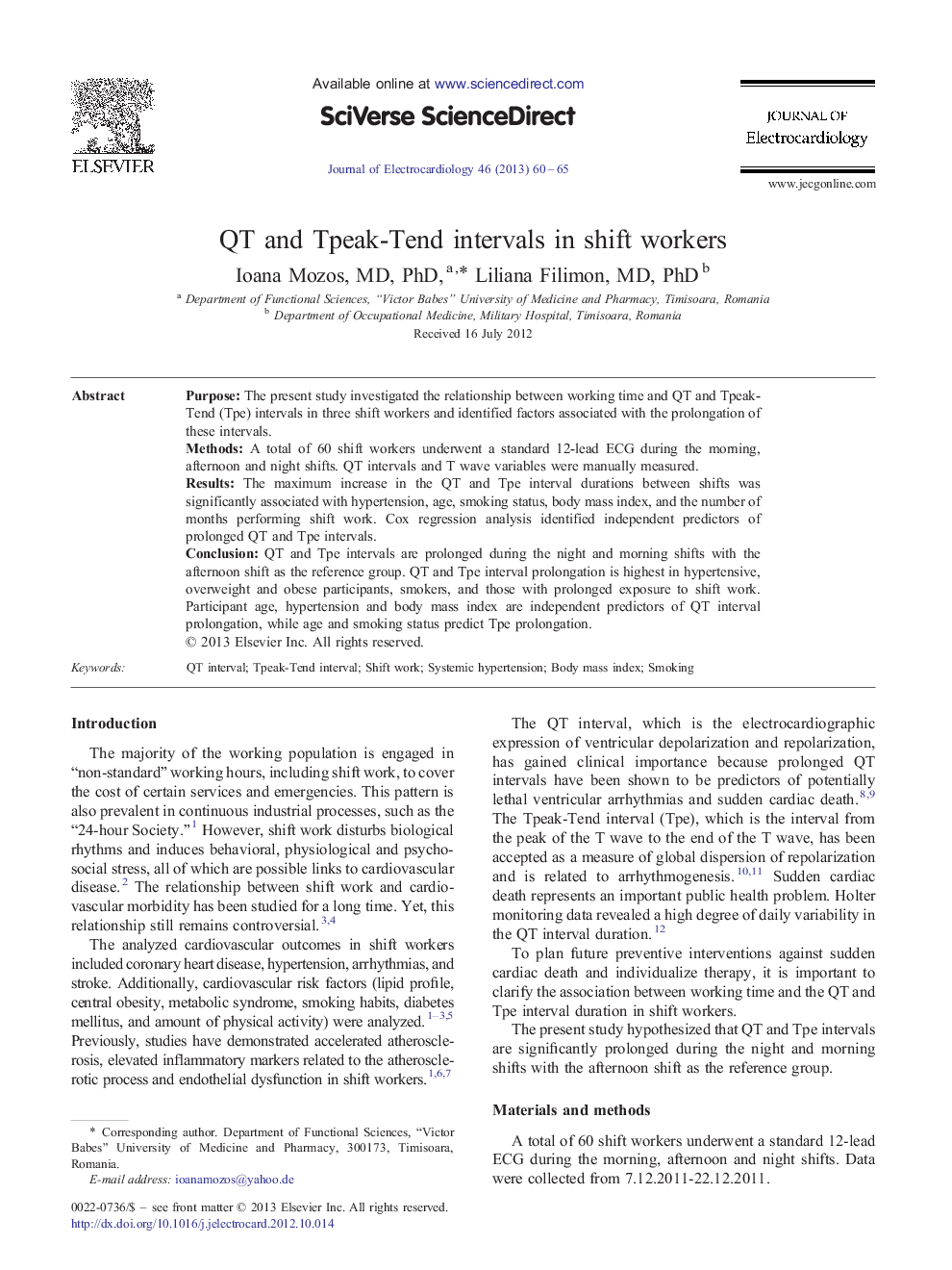| کد مقاله | کد نشریه | سال انتشار | مقاله انگلیسی | نسخه تمام متن |
|---|---|---|---|---|
| 2968026 | 1178864 | 2013 | 6 صفحه PDF | دانلود رایگان |

PurposeThe present study investigated the relationship between working time and QT and Tpeak-Tend (Tpe) intervals in three shift workers and identified factors associated with the prolongation of these intervals.MethodsA total of 60 shift workers underwent a standard 12-lead ECG during the morning, afternoon and night shifts. QT intervals and T wave variables were manually measured.ResultsThe maximum increase in the QT and Tpe interval durations between shifts was significantly associated with hypertension, age, smoking status, body mass index, and the number of months performing shift work. Cox regression analysis identified independent predictors of prolonged QT and Tpe intervals.ConclusionQT and Tpe intervals are prolonged during the night and morning shifts with the afternoon shift as the reference group. QT and Tpe interval prolongation is highest in hypertensive, overweight and obese participants, smokers, and those with prolonged exposure to shift work. Participant age, hypertension and body mass index are independent predictors of QT interval prolongation, while age and smoking status predict Tpe prolongation.
Journal: Journal of Electrocardiology - Volume 46, Issue 1, January–February 2013, Pages 60–65